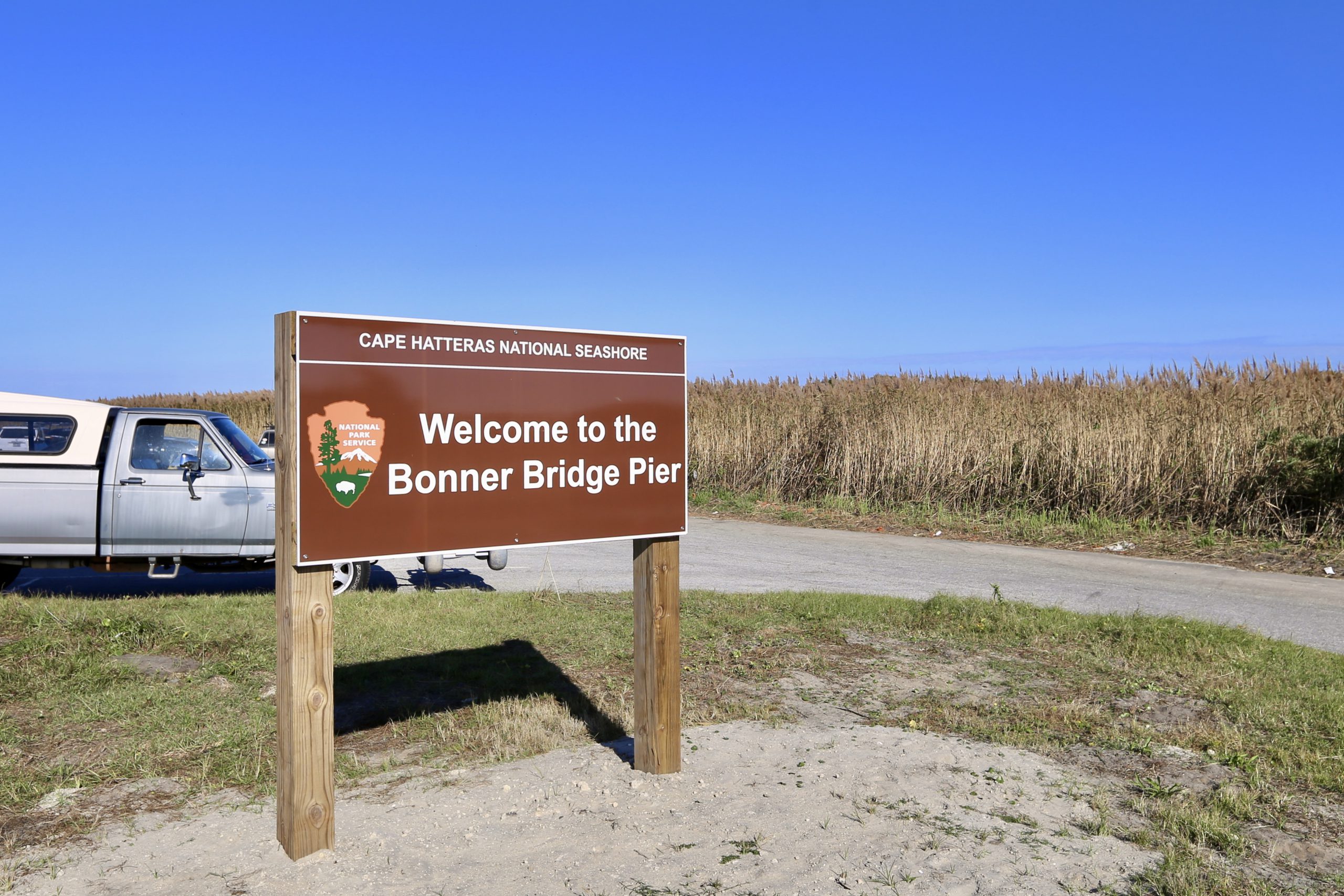Well before the Outer Banks was the popular tourist destination that it is today, beach lifestyle was much different. One of the major ways that life on the Outer Banks has changed is through the building of bridges. Prior to modern day architecture, the only way to navigate the barrier island system was by boat.
In 1963, Hatteras Island was changed forever as the first bridge was built connecting the island to the rest of the world. The Bonner Bridge, named after NC Congressman Herbert C. Bonner, who worked with the National Park Service to get funding for the expensive project, literally and figuratively paved a new life for islanders. The completion of this project brought about the construction of highway NC-12 through Hatteras Island which prompted a rise in new home construction, and a blossoming of tourism.
As summers on the island turned into years, and years turned into decades, the Bonner Bridge was the gateway for endless travelers. This bridge allowed millions of visitors to enjoy the beauty of the southern Outer Banks, as well as ease the life of the local villagers, as medical care and hurricane evacuation was much more navigable.
As time passed, this vital passage that stitched the OBX together began weakening. Its location, smack dab in the middle of the Oregon Inlet played into it's fate. After numerous hurricanes, taking a few too many beatings from the hefty shoals, and even surviving a dredge collision, ol'Bonner was ready to retire.
After 3 decades in the making, a new bridge emerged: taller, stronger, and ready for travelers from both near and far! In 2019, the Basnight Bridge officially opened to traffic. Spanning 2.8 miles over the sparkling Oregon Inlet, this bridge and its engineers have received many accolades. Most notably, in 2020 the Basnight Bridge was named American Infrastructure's Bridge of the Year.
So just what happened to the iconic Bonner Bridge? With a structure so large, it didn't just crumble into the sea, or vanish into thin air. New life was breathed into it, so that it can continue to facilitate memories for generations to come.
- Remnants of the bridge are being used off-shore as artificial reefs to benefit our local ecosystem. This is an excellent means of recycling, and will help marine life flourish off of our coast.
- One thousand feet of the former 2.7-mile structure is being preserved for two reasons:
- For use as an observation, pedestrian, and fishing pier
- For use as a "trainer" for the inlet's currents. By keeping a portion of the pier in place, specialists state that it will help guide currents towards the center of the inlet, easing boating navigation.
The Bonner Bridge Pier Opens to the Public:
- Opening on October 1, 2021, the OBX's newest pier saw anglers eagerly reeling in the first catches to "christen" the Bonner Bridge Pier. This project came to fruition through the National Park Service, Fish and Wildlife Service, and the North Carolina Department of Transportation.
- Use of the pier is free, however, to fish, one must have a valid North Carolina Coastal Recreational Fishing License.
The following information comes from the National Park Service:
Rules
- Fishing is a fun and rewarding experience. However it is important to be aware of the rules and regulations surrounding fishing, and to be respectful to fellow anglers. For your safety, jumping from the pier, or climbing down on the bridge pilings is prohibited. Boats are not allowed to tie-off, or moor to the bridge structure.
- All anglers must have a coastal North Carolina Fishing License to fish from the pier.
- The pier is open, free of charge, 24 hours a day.
The following are prohibited on the Bonner Pier:
- Pets
- Drones
- Glass containers
- No vehicles are allowed outside of the parking lot, including on the pier. This includes golf carts.
- Canopies, grills, and generators
- Pin-rig or spearfishing
- Bicycles, skateboards, and rollerblades
- Fishing with more than 2 rods per angler
Etiquette
- Be considerate of those around you and do not crowd other anglers.
- Keep music volume low
- Attend fishing carts and rods at all times
- Use underhand casts
- Unwanted fish should be released alive
- Wear shoes or sandals
- Recycle fishing line in the provided canisters
- Report sturgeon and seal sightings to Cape Hatteras NS Biologists at (252) 216-6892
If You Hook a Sea Turtle
- Contact Cape Hatteras NS biologists at (252) 216-6892
- As you wait for a response, use a net to lift turtle to pier or land
- Do not lift turtle by hook or pulling the line. If unable to lift try to walk the turtle to shore
- Keep hands away from the turtle's mouth and flippers
- When you have control of the turtle, use scissors or knife to cut line, leaving 2 feet of line to aid rescuers in de-hooking. Leave hook in place.
- If you cannot reach a response team or are unable to lift turtle cut line as close to turtle as possible.






